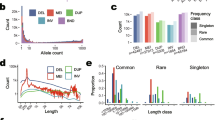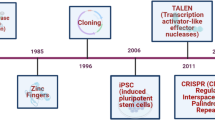Abstract
As a transcription factor regulating circadian rhythm, brain and muscle Arnt-like protein-1 (BMAL1) plays an important role in lipid homeostasis. The Chinese indigenous and western pig breeds show marked difference in fat deposition, the structure and function of porcine BMAL1 (pBMAL1) between them might be different. In present study, the molecular characteristics and chromosomal location of pBMAL1 were analyzed. The results indicated that pBMAL1 cDNA had a coding region of 1,878 bp and shared 94.36, 89.85 and 89.79% identity with human, mouse and rat BMAL1, respectively, and the pBMAL1 protein had 99.20, 98.24 and 97.92% identity to those of human BMAL1b, mouse BMAL1b and rat BMAL1b, respectively. Compared with other mammals, pBMAL1 was more closely related to human BMAL1. The expression of pBMAL1 was detected in kidney, stomach, spleen, bladder, gallbladder, lumbar spinal cord, medulla oblongata, heart, longissimus dorsi muscle, liver, small intestine, large intestine, lung and backfat tissues. In adipose tissues, it was detected in mesentery fat, leaf fat, caul fat, backfat and cardiac fat, however, the expression level was not significantly different. Alternative usage of exon 2 was revealed to result in two pBMAL1 transcripts. Finally, by using a whole genome porcine radiation hybrid (RH) panel (IMpRH), the pBMAL1 gene was mapped to SSC 2p11-q21.





Similar content being viewed by others
References
Moore RY (1997) Circadian rhythms: basic neurobiology and clinical applications. Annu Rev Med 48:253–266. doi:10.1146/annurev.med.48.1.253
Hogenesch JB, Gu YZ, Jain S, Bradfield CA (1998) The basic-helix-loop-helix-PAS orphan MOP3 forms transcriptionally active complexes with circadian and hypoxia factors. Proc Natl Acad Sci USA 95:5474–5479. doi:10.1073/pnas.95.10.5474
Takahata S, Sogawa K, Kobayashi A, Ema M, Mimura J, Ozaki N, Fujii-Kuriyama Y (1998) Transcriptionally active heterodimer formation of an Arnt-like PAS protein, Arnt3, with HIF-1a, HLF, and clock. Biochem Biophys Res Commun 248(3):789–794. doi:10.1006/bbrc.1998.9012
Bunger MK, Wilsbacher LD, Moran SM, Clendenin C, Radcliffe LA, Hogenesch JB, Simon MC, Takahashi JS, Bradfield CA (2000) Mop3 is an essential component of the master circadian pacemaker in mammals. Cell 103:1009–1017. doi:10.1016/S0092-8674(00)00205-1
Yu WJ, Ikeda M, Abe H, Honma S, Ebisawa T, Yamauchi T, Honma K, Nomura M (1999) Characterization of three splice variants and genomic organization of the mouse BMAL1 gene. Biochem Biophys Res Commun 260(3):760–767. doi:10.1006/bbrc.1999.0970
Gekakis N, Staknis D, Nguyen HB, Davis FC, Wilsbacher LD, King DP, Takahashi JS, Weitz CJ (1998) Role of the CLOCK protein in the mammalian circadian mechanism. Science 280:1564–1569. doi:10.1126/science.280.5369.1564
Oishi K, Shirai H, Ishida N (2005) CLOCK is involved in the circadian transactivation of peroxisome proliferators-activated receptorα (PPARα) in mice. Biochem J 385:575–581. doi:10.1042/BJ20040863
Inoue I, Shinoda Y, Ikeda M, Hayashi K, Kanazawa K, Nomura M, Matsunaga T, Xu H, Kawai S, Awata T, Komoda T, Katayama S (2005) CLOCK/BMAL1 is involved in lipid metabolism via transactivation of the peroxisome proliferator-activated receptor (PPAR) response element. J Atheroscler Thromb 12(3):169–174
Aoyagi T, Shimba S, Tezuka M (2005) Characteristics of circadian gene expressions in mice white adipose tissue and 3T3–L1 adipocytes. J Health Sci 51:21–32. doi:10.1248/jhs.51.21
Ikeda M, Nomura M (1997) cDNA cloning and tissue-specific expression of a novel basic helix-loop-helix/PAS protein (BMAL1) and identification of alternatively spliced variants with alternative translation initiation site usage. Biochem Biophys Res Commun 233(1):258–264. doi:10.1006/bbrc.1997.6371
Milan D, Hawken R, Cabau C, Leroux S, Genet C, Lahbib Y, Tosser G, Robic A, Hatey F, Alexander L, Beattie C, Schook L, Yerle M, Gellin J (2000) IMpRH server: an RH mapping server available on the web. Bioinformatics 16:558–559. doi:10.1093/bioinformatics/16.6.558
Shimba S, Ishii N, Ohta Y, Ohno T, Watabe Y, Hayashi M, Wada T, Aoyagi T, Tezuka M (2005) Brain and muscle Arnt-like protein-1 (BMAL1), a component of the molecular clock, regulates adipogenesis. Proc Natl Acad Sci USA 102(34):12071–12076. doi:10.1073/pnas.0502383102
Ando H, Yanagihara H, Hayashi Y, Obi Y, Tsuruoka S, Takamura T, Kaneko S, Fujimura A (2005) Rhythmic messenger ribonucleic acid expression of clock genes and adipocytokines in mouse visceral adipose tissue. Endocrinology 146(12):5631–5636. doi:10.1210/en.2005-0771
Zvonic S, Ptitsyn AA, Conrad SA, Scott LK, Floyd ZE, Kilroy G, Wu X, Goh BC, RMynatt L, Gimble JM (2006) Characterization of peripheral circadian clocks in adipose tissues. Diabetes 55:962–970. doi:10.2337/diabetes.55.04.06.db05-0873
Gómez-Abellán P, Hernández-Morante JJ, Luján JA, Madrid JA, Garaulet M (2008) Clock genes are implicated in the human metabolic syndrome. Int J Obes 32(1):121–128. doi:10.1038/sj.ijo.0803689
Chong NW, Chaurasia SS, Haque R, Klein DC, Iuvone PM (2003) Temporal–spatial characterization of chicken clock genes: circadian expression in retina, pineal gland, and peripheral tissues. J Neurochem 85:851–860
Rettenberger G, Bruch J, Fries R, Archibald AL, Hameister H (1996) Assignment of 19 porcine type I loci by somatic cell hybrid analysis detects new regions of conserved synteny between human and pig. Mamm Genome 7(4):275–279. doi:10.1007/s003359900082
Jeon JT, Carlbory O, Törnsten A, Giuffra E, Amarger V, Chardon P, Andersson-Eklund L, Andersson K, Hansson I, Lundström K, Andersson L (1999) A paterally expressed QTL affecting skeletal and cardiac muscle mass in pigs maps to the IGF2 locus. Nat Genet 21:157–158. doi:10.1038/5938
Acknowledgments
The authors gratefully acknowledge Dr. Yerle M at INRA, Laboratoire de Génétique Cellulaire in France for giving us radiation hybrid panels and Dr Meiyi Tang for valuable suggestions and revisions of the manuscript. This work was supported by grants from “863” high-tech research and development program of China (No. 2006AA10Z1E1 and No. 2007AA10Z153).
Author information
Authors and Affiliations
Corresponding author
Rights and permissions
About this article
Cite this article
Xing, J., Xu, Q., Li, K. et al. Molecular characterization and chromosomal mapping of porcine brain and muscle Arnt-like protein-1 gene. Mol Biol Rep 36, 2423–2430 (2009). https://doi.org/10.1007/s11033-009-9473-y
Received:
Accepted:
Published:
Issue Date:
DOI: https://doi.org/10.1007/s11033-009-9473-y




